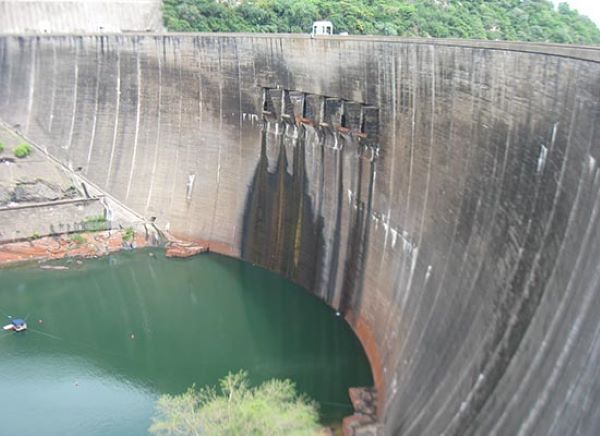Zambia has induced a daily six-hour-four-month-long load management spurred by climate change as water levels in one of the country’s main water reservoirs deplete drastically, the energy minister has said.
The power saving measures, comes into effect on 15 December induced by reduction in water levels on the Kariba dam shared with its neighbour Zimbabwe following climatic effects that have characterised the continent and beyond and help reduce the possible impact on the country.
Energy Minister Peter Kapala told lawmakers Friday that the drastic reduction in water levels prompted regulator-Zambezi River Authority to restrict consumption of the commodity to save the dam as the levels continue dropping at a faster rate than before-threatening hydrological dictates
“During the year 2022, the Lake’s water level has been decreasing steadily on account of low inflows from the mainstream Zambezi River and its tributaries.” he says.
According to data from the ZRA by 28 last month the Kariba lake water levels nose-dived to 476.09m above sea level, representing only 4.12%of usable water storage for power generation.
The low water level situation in Lake Kariba is a threat to the power generation for both the Kariba North Bank Hydropower station (Zambian side) and Kariba South Bank Hydropower station (Zimbabwean side).
The sustained decline raises fear for authorities to project that should the current power generation and subsequent water utilization continues, the remaining water for power generation at the Kariba complex could be worsened due to overutilization of the available water.,
The Zambian Government has been compelled to initiate mitigation measures to redress the situation until the water levels improve.
This implies that there will be minimal use of energy by consumers and ultimately affect business in an already affected Southern African state reeling from the effects of COVID 19 and climatic change effects buffeting the rest of the world.
“Against this background, there is a need to implement measures aimed at rationing the water in the lake in order to avoid a complete shutdown of electricity generation activities at the Kariba Complex.
There are proposals by the Government and regulators-ZRA to closely monitor the situation from time to time in the next 120 days to ensure the security of both the dam and other electrical infrastructure while ensuring the security of the electricity supply while mitigating the impact on the economy.
Zimbabwe, hard hit by the water shortage in the man-made-62-year-old dam last month ordered the suspension of the electricity generation at its main hydro plant because of a water shortage, according to a letter dated Nov. 25 seen by FRA.
Regulator-ZRA-managing the water for both Zambia and Zimbabwe had instructed the Zimbabwe Power Company about the status of the Kariba South hydropower station.
It disclosed that the facility had used more than the water allocation for 2022 with the dams usable water storage marked at a paltry 4.6% full.
The regulator had been prompted to firmly guide on the water status and called for a complete suspension of the commodity until next month after another review had been done.
“The Zambezi River Authority is left with no choice but to firmly guide that … generation activities at the South Bank Power Station are wholly suspended henceforth until January 2023 when a further review of the substantive hydrological outlook at Kariba will be undertaken,” part of the letter says.
Zimbabwe, like Zambia has faced acute water shortages in recent years spurred by recurring droughts which have affected inflows into the Kariba and other water reservoirs.
Kariba South has an installed capacity of 1,050 megawatts but has been producing well below that due to low water levels in the dam. The persistent shortcomings of the water supply to the two neighbours-Zambia-Zimbabwe have forced authorities to consider constructing a new dam to complement.
The US4.5 billion-2,400 MW Batoka gorge-being constructed by two Chinese companies on a Build-To-Buy’’ (BTB) basis has been prompted by recurring (Sovereign) defaults by both Zambia and Zimbabwe.
The much touted Batoka project will be constructed on 181-meter (594-foot) high land and will house two power stations on either bank of the Zambezi River to add 2,400 megawatts to Africa’s power grid.
The plan of the cascading dam was developed by General Electric and Power Construction Corp., of China Ltd., with support from ZRA and needs financing from various sources including pension funds in the two countries.
Both southern African countries rely on the Kariba Dam, the world’s largest man-made reservoir, to generate power. Africa as a sub-Saharan region is short of power needed to drive economies.
Electricity demand in Africa today is estimated at 700 terawatt-hours (TWh). The North African economies and South Africa account for over 70% of the total. An additional 40GW of new hydropower is required by 2030 – a doubling of the current capacity.
Achieving the SAS will also require a doubling in investment, with 60 percent of this expected to come from the private sector, says power regulator- Association of Power Utilities in Africa-APUA.









